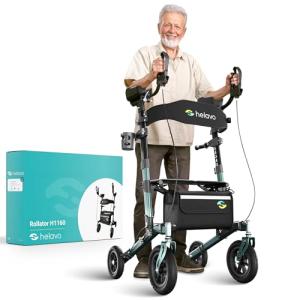The Comprehensive Guide to Heavy-Duty Walkers: Enhancing Mobility and Independence
In an aging society where people are progressively focused on maintaining their self-reliance and mobility, heavy-duty walkers have actually become necessary mobility aids. These items use boosted support, stability, and resilience, making them perfect for heavier individuals or those who require additional assistance while walking. In this comprehensive guide, we will dive into the features, benefits, and various kinds of heavy-duty walkers, aiming to provide a well-rounded understanding for those considering a purchase or those assisting somebody in need.
What is a Heavy-Duty Walker?
Heavy-duty walkers are particularly designed for people needing extra support and stability while walking. Unlike standard walkers, which may have weight limits around 300 pounds, heavy-duty designs can accommodate people weighing anywhere from 300 to over 500 pounds. They are developed with sturdier products and feature a broader frame for increased stability.
Secret Features of Heavy-Duty Walkers
| Function | Description |
|---|---|
| Weight Capacity | Normally 300-- 500+ pounds, appropriate for larger individuals. |
| Frame Material | Built from heavy-duty aluminum or steel for strength. |
| Width and Height | Wider frames and adjustable heights for user comfort. |
| Footings | Created with larger rubber suggestions or wheels for improved grip and traction. |
| Seats and Accessories | Lots of designs feature padded seats and baskets for benefit. |
Advantages of Using Heavy-Duty Walkers
Heavy-duty walkers offer various advantages beyond basic mobility:
- Enhanced Stability: Their sturdy design prevents tipping and provides a secure base, reducing the danger of falls.
- Enhanced Confidence: With the included support, users often feel more secure and confident when walking, motivating mobility.
- Customization: Many heavy-duty walkers have adjustable heights and configurations, catering to the specific needs of users.
- Practical Design: Several models feature integrated seats, storage spaces, or multipurpose features that make bring individual products easier.
- Restorative Benefits: Regular use of walkers can assist improve circulation and promote a more active way of life, which is essential for general health.
Typical Conditions Benefiting from Heavy-Duty Walkers
| Condition | Description |
|---|---|
| Obesity | Extra support for heavier users requiring assist with mobility. |
| Arthritis | Supplies stability and lowers stress on joints while walking. |
| Post-Surgery Recovery | Assists with rehab and steady return to mobility. |
| Neurological Conditions | Supports those with balance or coordination problems. |
| Elderly Mobility Challenges | Provides the elderly a more secure means of maintaining self-reliance. |
Types of Heavy-Duty Walkers
When picking a heavy-duty walker, it's essential to think about the particular needs and lifestyle of the user. Below are the frequently readily available alternatives:
- Standard Heavy-Duty Walker: Simple yet effective, these walkers feature a robust frame without wheels. Best for fixed support.
- Rollator Walker: Equipped with wheels, a brake system, and often a seat, these walkers aid users in moving at a quicker rate while allowing for fast rests.
- Front-Wheeled Walker: This type has two wheels at the front and strong legs at the back. It offers more mobility than a standard walker while maintaining stability.
- Mix Walker-Transport Chair: These multifunctional gadgets can be used as a walker and easily transformed to a transport chair for those needing more assistance.
- Portable Heavy-Duty Walker: Lightweight but sturdy, these walkers are designed for ease of transport, ideal for those who take a trip frequently.
Relative Chart of Heavy-Duty Walkers
| Type | Stability | Maneuverability | Mobility | Seat Available |
|---|---|---|---|---|
| Standard Heavy-Duty | High | Low | Low | Optional |
| Rollator | Medium | High | Medium | Yes |
| Front-Wheeled | Medium | Medium | Medium | No |
| Mix Chair | Medium | Low | Low | Yes |
| Portable Heavy-Duty | Medium | High | High | No |
Often Asked Questions (FAQs)
Q1: How do I pick the ideal heavy-duty walker for me?
- Weight Capacity: Ensure that the walker exceeds your weight to ensure safety.
- Height: Choose a walker with adjustable height features to fit your body size.
- Use: Consider your specific requirements-- whether you require a seat, additional storage, or the capability to browse various terrains.
Q2: Are heavy-duty walkers covered by insurance coverage?
Some insurance providers may cover the cost of heavy-duty walkers, specifically if prescribed by a health care specialist. Rollator For Seniors to contact your insurance coverage service provider for specifics concerning protection.
Q3: How do I maintain my heavy-duty walker?
Regularly examine the walker for wear and tear. Tidy the walker's frame and wheels to avoid accumulation. Additionally, check the brakes and adjust the height as necessary.
Q4: Can I use a heavy-duty walker on uneven terrain?
Some heavy-duty walkers, especially rollators with bigger wheels, are designed for different terrains. However, basic walkers may not carry out as well on unequal surface areas.
Q5: When should I think about using a heavy-duty walker?
If you experience trouble maintaining balance, your weight surpasses the capacity of basic walkers, or you have mobility restrictions due to medical conditions, a heavy-duty walker may be proper.
Heavy-duty walkers are vital mobility help that provide many advantages, especially for individuals who require more support. They are important in promoting self-reliance, safety, and confidence while browsing daily life. By comprehending the different types, features, and conditions they can help with, users can make informed decisions in their quest for increased mobility and lifestyle.
For those considering a heavy-duty walker, taking into account individual requirements and preferences will cause a more gratifying and secure walking experience. Whether on your own or a liked one, comprehending the intricacies of heavy-duty walkers will play an essential function in cultivating mobility and independence.

